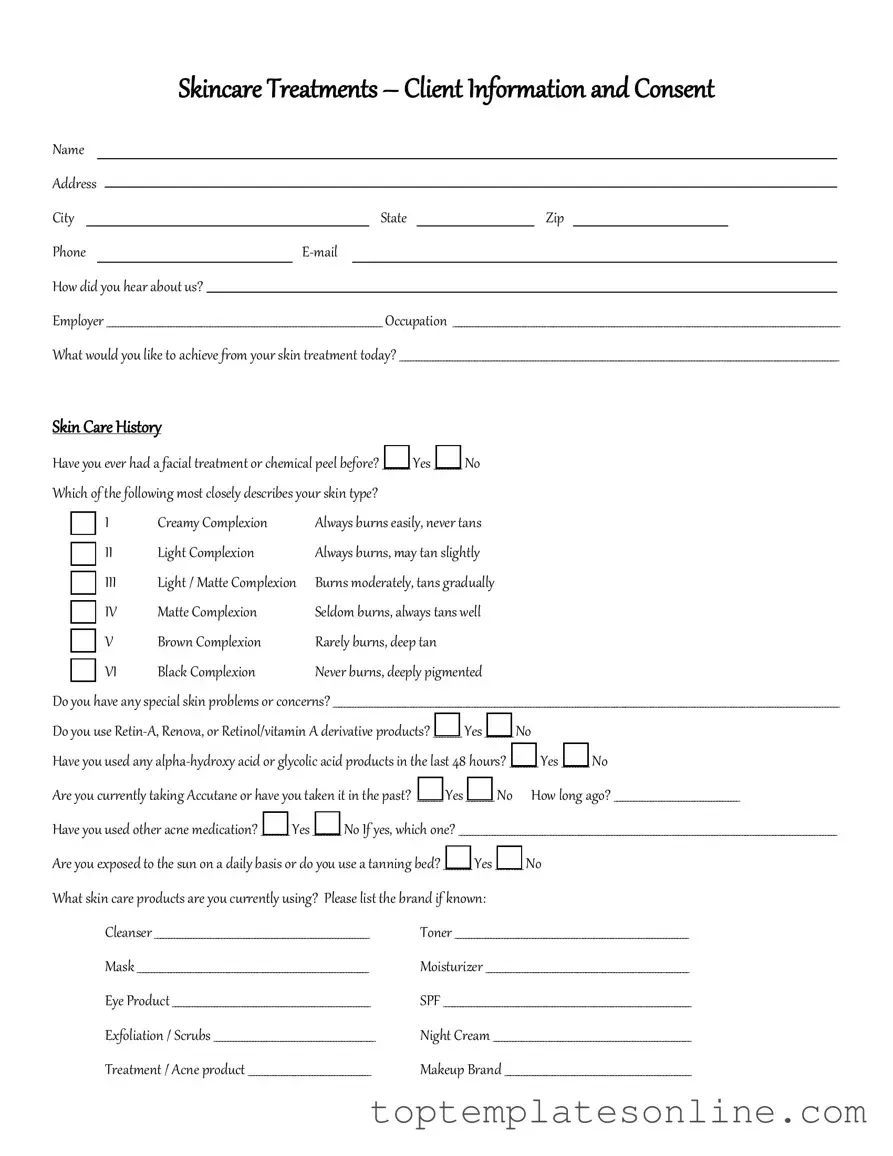The Facial Consent form plays a crucial role in the realm of skincare and cosmetic treatments, ensuring that clients are fully informed and protected throughout their experience. This form typically outlines the nature of the facial procedures, detailing the potential benefits and risks involved. It is designed to gather essential information about the client's medical history, allergies, and any prior skin treatments, which helps practitioners tailor their services to individual needs. Furthermore, the form often includes a section for clients to acknowledge their understanding of the treatment process, including post-care instructions and expected outcomes. By signing this document, clients give their consent to proceed with the treatment, reinforcing the importance of transparency and communication between the practitioner and the client. Ultimately, the Facial Consent form serves as a vital tool in promoting safety and satisfaction in skincare practices.
